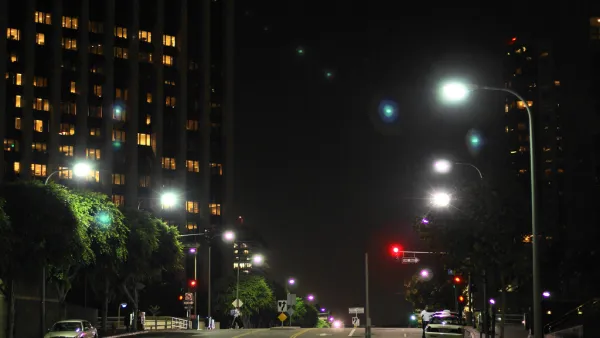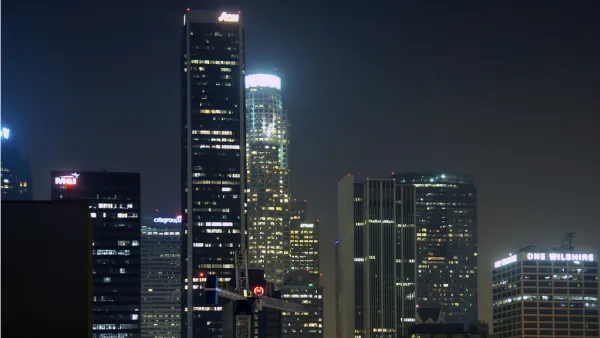Forbes Magazine reflects on the importance and impacts of light-emitting diode (LED) lights as more cities replace their traditional streetlamps with LEDs.
Los Angeles's Bureau of Street Lighting has been busy in the last five years, spending $57 million to replace 155,000 streetlamps with light-emitting diode (LED) lights. With 60,000 more to go, most of them being tricky decorative lights, the city will spend $50 million more. Los Angeles is at the forefront of an often overlooked and seldom discussed factor of urbanization, light pollution.
With more cities and businesses requiring light for commercial or safety purposes, the effects of lighting can lead to surges in electricity consumption, destruction of environment and wildlife, and elimination of the starry nights that have inspired humanity for thousands of years.
A recent article in Forbes Magazine by Ucilia Wang focuses on the importance and potential impacts of lighting cities with LEDs. In recent years, LEDs have proven to more cost effective than regular high-pressure streetlamps, as they "last three to four times longer and produce two to three times more light per watt, delivering anywhere from 30% to 70% in annual electricity savings...they’re also far more programmable and connect more efficiently with radio and sensor chips to create citywide wireless networks to monitor crime, power outages and water main breaks and coordinate disaster relief."
Wang also explains how LED streetlamps can use less light by connecting to motion sensors, and thus eliminating waste. On average, forty percent of any given city's electricity needs powers street lighting, and nearly fifty percent of that is wasted. Aiming to solve this problem, the Danis Outdoor Lighting Lab, or DOLL Lab, located outside of Copenhagen, is already pioneering motion-sensing LED streetlamp experiments in their living lab.
As previously covered in Planetizen, changing from traditional streetlamps to LED lights not only saves municipalities millions each year, but also benefits cinematography.
FULL STORY: How LEDs Are Going To Change The Way We Look At Cities

National Parks Layoffs Will Cause Communities to Lose Billions
Thousands of essential park workers were laid off this week, just before the busy spring break season.

Retro-silient?: America’s First “Eco-burb,” The Woodlands Turns 50
A master-planned community north of Houston offers lessons on green infrastructure and resilient design, but falls short of its founder’s lofty affordability and walkability goals.

Delivering for America Plan Will Downgrade Mail Service in at Least 49.5 Percent of Zip Codes
Republican and Democrat lawmakers criticize the plan for its disproportionate negative impact on rural communities.

Test News Post 1
This is a summary

Test News Headline 46
Test for the image on the front page.

Balancing Bombs and Butterflies: How the National Guard Protects a Rare Species
The National Guard at Fort Indiantown Gap uses GIS technology and land management strategies to balance military training with conservation efforts, ensuring the survival of the rare eastern regal fritillary butterfly.
Urban Design for Planners 1: Software Tools
This six-course series explores essential urban design concepts using open source software and equips planners with the tools they need to participate fully in the urban design process.
Planning for Universal Design
Learn the tools for implementing Universal Design in planning regulations.
EMC Planning Group, Inc.
Planetizen
Planetizen
Mpact (formerly Rail~Volution)
Great Falls Development Authority, Inc.
HUDs Office of Policy Development and Research
NYU Wagner Graduate School of Public Service




























